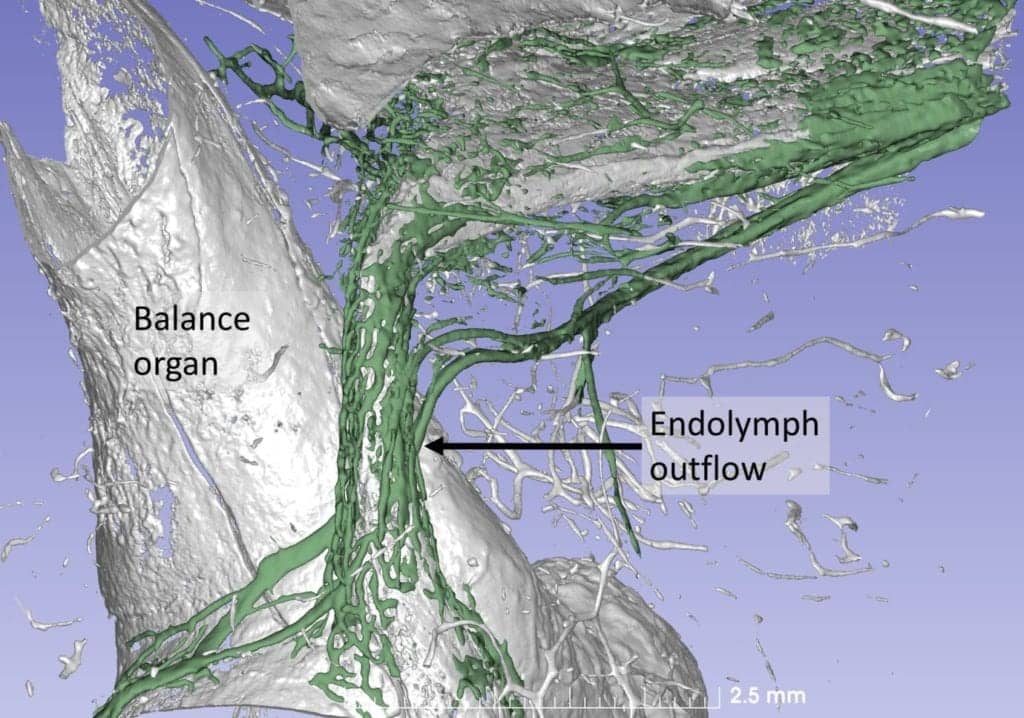The organ of balance in the inner ear is surrounded by the hardest bone in the body. Using synchrotron X-rays, researchers at Uppsala University have discovered a drainage system that may be assumed to play a major role in the onset of Ménière’s disease, a common and troublesome disorder. These results are published in the journal Scientific Reports as well as on the Uppsala University’s website.
Ménière’s disease is manifested in sudden onset of severe dizziness (vertigo) attacks, hearing impairment, and tinnitus. Accumulation of excess fluid in the inner ear is thought to cause the disorder, from which approximately 615,000 people in the United States suffer.

The researchers behind the new scientific article have investigated the organs in the human inner ear, a difficult area to study. Using synchrotron X-ray imaging, an advanced and powerful form of computer tomography (CT), the scientists were able to study the balance organ along with its surrounding blood vessels. Since the technology generates energy too high for use on living humans, donors’ temporal bones were used.
The images of the inner ear were reconstructed to make a three-dimensional model in the software, Inside the hard bone, the researchers discovered a drainage system that is thought to explain how the fluid in the inner ear is absorbed. This discovery may bring about an improved understanding of how and why Ménière’s disease arises.
The synchrotron imaging investigation was carried out in Saskatoon, in the Canadian province of Saskatchewan. The study was conducted jointly with Dr Sumit Agrawal and Dr Hanif Ladak, who are researchers in London, Ontario (Canada).
Original Paper: Nordstrom CK, Li H, Ladak HM, Agrawal S, Rask-Andersen H. A Micro-CT and synchrotron imaging study of the human endolymphatic duct with special reference to endolymph outflow and Meniere’s disease. Scientific Reports. 2020;10(8295).
Source: Uppsala University, Scientific Reports
Image: Uppsala University


